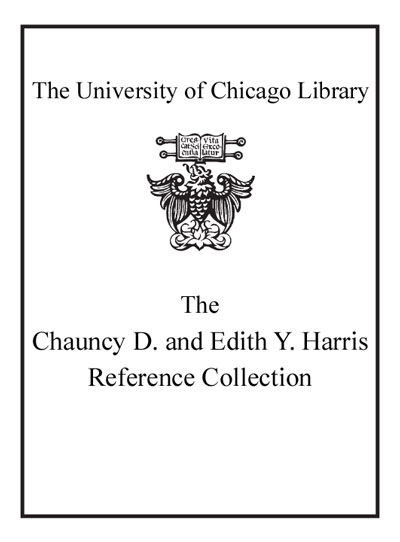Review by Choice Review
A sibling of the recent Encyclopedia of Science Fiction, ed. by Clute and Peter Nicholls (CH, Oct'93), Clute and Grant's monumental work, the first comprehensive encyclopedia on fantasy, covers literature, films, television, opera, art, and comics in more than 4,000 entries, angels to zombies. An outgrowth of the earlier work, this one stems from the realization by the editorial team of the need to cover the field of fantasy in a similar manner. Extensive cross-references and current author bibliographies are found in most entries. The editors drafted a list of themes and used that to shape a structure for the field of fantasy, which is decidedly more difficult to define than science fiction. The interrelationship of themes and place in fantasy adds continuity. The large group of contributors and the experience and reputation of the editors are demonstrated in the breadth, depth, and outstanding quality of this work. Previous attempts have resulted in collections of biobibliographies. The contribution this work makes is to structure the field by defining its themes and creating a "map of fantasy." All levels. J. O. Christensen; Brigham Young University
Copyright American Library Association, used with permission.
Review by Booklist Review
Like The Encyclopedia of Science Fiction (see below), this is an essential reference resource to the genre as it appears in books, short stories, comics, and film. [RBB S 1 97]
From Booklist, Copyright (c) American Library Association. Used with permission.
Review by Library Journal Review
Editors Clute and Grant (The Encyclopedia of Science Fiction, St. Martin's, 1993) have put together an excellent and highly readable source for fantasy, the first of its kind. The editors recognize that "fantasy" cannot be precisely defined (though it excludes sf, horror, and the supernatural), so they simply let the entries speak for themselves. For example, entries cover 38 Frankenstein movies; a fascinating account of "Jack" (Frost, the Ripper, the Giant-Killer, etc.); M.C. Escher's distinctive experiments with perspective in his engravings; essays on the TV shows Bewitched and Batman; and individual entries for such movies as Terry Gilliam's Brazil, concepts such as totems, and writers like Ray Bradbury. The entries are well written and signed, and many include useful bibliographies. This belongs in most academic and public libraries.Peter A. Dollard, Alma Coll. Lib., Mich. (c) Copyright 2010. Library Journals LLC, a wholly owned subsidiary of Media Source, Inc. No redistribution permitted.
(c) Copyright Library Journals LLC, a wholly owned subsidiary of Media Source, Inc. No redistribution permitted.
Review by School Library Journal Review
Gr 10 UpA comprehensive resource about fantasy literature and media. Similar in format to The Encyclopedia of Science Fiction (St. Martin's, 1993), it presents a thorough catalog of authors, awards, movies, TV shows, fantastic themes, historical individuals, and articles on the literature of various nations. There are entries on Howard the Duck and Homer, Santa Claus and Silverberg, Garcia Marquez and Germany. Articles are concise, detailed, and clearly written, although the text is sometimes dry. The book's main value is its cross-referencing. An entry about an author highlights themes covered elsewhere in bold face, and vice versa. For example, the definition of Steam Punk as a fantasy sub-genre refers to Alternative Worlds and to the author Tim Powers. By leading browsers from their favorite writer's works to articles about specific thematic elements and then to other authors who write along similar themes, The Encyclopedia serves as an efficient reader's guide to the genre. Unfortunately, specific mythological elements are not as thoroughly covered. Although there are articles on unicorns and dragons in fantastic literature, there is no entry covering griffins. Still, this is a useful reference book.Lawrence Kapture, New York Public Library (c) Copyright 2010. Library Journals LLC, a wholly owned subsidiary of Media Source, Inc. No redistribution permitted.
(c) Copyright Library Journals LLC, a wholly owned subsidiary of Media Source, Inc. No redistribution permitted.
Review by Choice Review
Review by Booklist Review
Review by Library Journal Review
Review by School Library Journal Review

